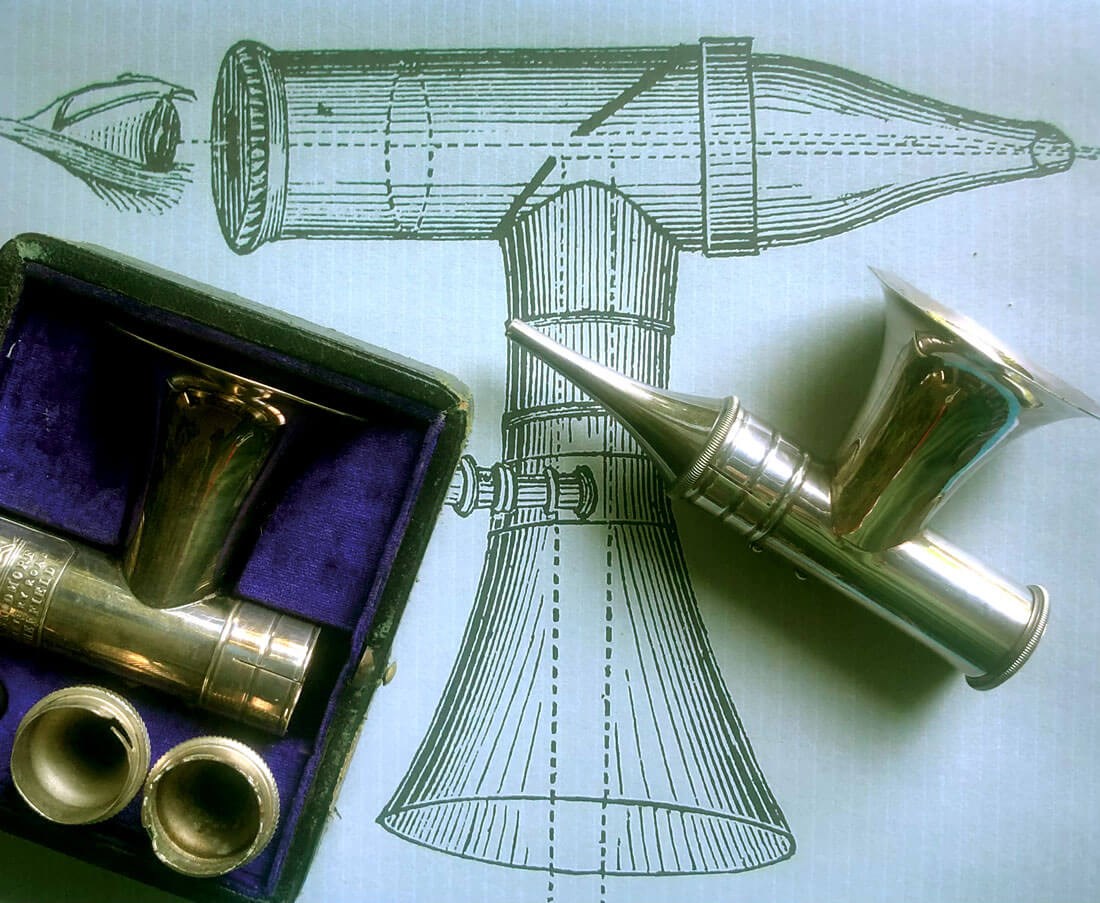Bringing light into darkness can also be a task for the physician. With the advent of endoscopy (initially by reflecting light into body cavities), new methods of diagnosis and treatment became available to the otologist. In 1865, the Scotsman John Brunton, a surgeon and obstetrician working in London, described a very compact instrument by which sun- or candle- light could be used to illuminate the ear canal and the ear drum.
Brunton (1835-1899) was born in Campbeltown, Kintyre. He graduated with a BA in 1855 and MA in 1856 at the University of Glasgow. In 1860, he became a licentiate of the Faculty of Physicians and Surgeons of Glasgow. He had a brilliant academic career, winning numerous awards in various medical fields and gaining his MD in 1860. In 1862, he moved to London, where he became highly respected as a general practitioner, surgeon and obstetrician.

Brunton´s Otoscope 1865 © Wolf Lübbers, Hannover.
He was said to have had a happy and friendly manner and was also a passionate fisherman. In the December 1865 issue of The Lancet, Brunton described, “a new auriscope or speculum auris” [1]. He said he had been dissatisfied with the current methods of otological examination. Two problems bothered him: (i) that during examination, the examiner’s own head obscured any available light; and, consequently, (ii) the examiner’s eye could not get close enough to the eardrum to examine it in detail.
His instrument consisted of a brass tube, with an ear speculum at one end. At the other end was an eyepiece with a weak magnifying lens and an adjustable focus. A perforated concave mirror at an angle of 45° was fitted inside the tube itself.
At right angles to the body of the instrument, and opposite the mirror, was a funnel-shaped speculum of polished silver for the collection of light rays, fitted so that incident light fell on the mirror. This light is thus reflected and directed towards the ear. A clear, slightly magnified image of the eardrum can therefore be seen through the eyepiece via the hole in the inclined concave mirror.
For many years, Brunton’s auriscope remained the standard apparatus for examining the ear, especially in the UK. Critics of the device pointed out that it could be used only for diagnosis. The small size of the speculum rendered any simultaneous instrumentation impossible.
Several surgical instrument manufacturers reproduced Brunton-style auriscopes, many in hallmarked sterling silver. Usually, they came with four sizes of specula and were presented in smart velvet-lined boxes covered in fine leather. The British ones were usually fitted with silver oval specula, whereas the few German versions (which were in contrast made of nickel-plated brass) had a circular cross-section. This national diversity in cross-sectional shape of the specula should not lead the reader to the rebuttable and wholly erroneous conclusion that British ear canals are a different shape from those of Germans!
Acknowledgement: I must thank John Riddington Young for his help with the King’s English.
References
1. Brunton J. A New Otoscope or Speculum Auris. Lancet 1865;2:617-8.




